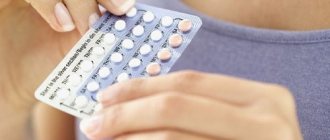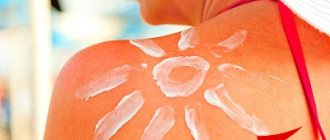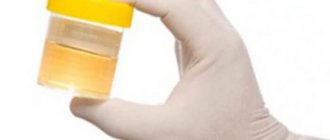Norfloxacin is a medication that has an antibacterial effect.
It is part of the pharmacological group of fluoroquinols and uroantiseptics.
The action is aimed at destabilizing the DNA chain in the bacterial cell, and therefore has a bactericidal effect.
This is an antibiotic that is 40% absorbed from the gastrointestinal tract (food intake makes the process slower).
The maximum result occurs within an hour after administration. A small amount is processed in the liver and excreted through bile and urine. The effect lasts for approximately 12 hours.
This drug quickly penetrates into human organs and tissues (uterus, kidneys, peritoneal organs and others).
Release form
It enters the pharmacological market in the form of tablets and drops for the eyes and ears.
- One tablet contains up to 400 mg of the active substance (norfloxacin). Additional substances include a small amount of lactose, starch, talc, etc. They go on sale in cardboard packs (10 pieces each) or in plastic tubes (10 and 20 pieces each).
- Eye and ear drops are enclosed in plastic bottles with a total volume of up to 5 ml. 1 ml of the product contains about 3 mg of norfloxacin and other components.
Indications for use
The key indications for the use of this medicine are the treatment of infectious diseases in which microbes are most sensitive to the substance.
Allows you to eliminate:
- staphylococci;
- Escherichia;
- salmonella;
- Neisseria;
- proteas;
- hafnia;
- Klebsiella;
- Yersinia;
- chlamydia;
- legionella;
- cholera vibrios and other pathogens
At the same time, ureaplasma, treponema pallidum, anaerobic bacteria and microorganisms are insensitive to this drug.
What does Norfloxacin help with? It is used to eliminate the following diseases:
- diseases of the human genitourinary system (urinary incontinence, prostatitis, urethritis);
- gonorrhea, cervicitis;
- diseases of the gastrointestinal tract (salmonellosis, diarrhea);
- as preventive measures to prevent recurrence of diseases of the urinary system and sepsis in patients with granulocytopenia.
- prevention of possible complications after surgical interventions in urology.
Eye drops are used to eliminate otitis media, as well as if a person has vision pathologies.
NORFLOXACIN (Norfloxacin)
Synonyms
Anqin, Bactinor, Gyrablock, Locson 400, Negaflox, Nolicin, Norbactin, Norilet, Normax, Norfaxin ), Norfacin, Renor, Sofasin, Spectrama, Urobacid, Chbroxin, Utibid.
Composition and release form
Norfloxacin. Tablets (200 mg, 400 mg, 800 mg); film-coated tablets (400 mg); film tablets (400 mg); eye/ear drops (1 ml - 3 mg).
pharmachologic effect
Norfloxacin is an antimicrobial drug from the group of broad-spectrum fluoroquinolones. Acts bactericidal.
Highly active against most gram-negative microorganisms: Escherichia coli, Salmonella, Shigella, Proteus, Morganella morganii, Klebsiella, including Klebsiella pneumoniae, Enterobacter, Serratia, Citrobacter, Yersinia, Providencia, Haemophilus influenzae, Pseudomonas aeruginosa, Neiss. gonorrhoeae, Neiss. meningitidis.
Active against some gram-positive microorganisms, in particular Staph, aureus. Norfloxacin is active against microorganisms that produce beta-lactamases. Anaerobic bacteria are not sensitive to the drug; Enterococcus and Acinetobacter are insensitive.
Indications
Infectious and inflammatory diseases caused by microorganisms sensitive to the drug, including for oral administration - diseases of the urinary tract, prostate, PS, gonorrhea, prevention of relapses of urinary tract infections, bacterial infections in patients with granulocytopenia, travelers' diarrhea;
for topical use - conjunctivitis, keratitis, keratoconjunctivitis, corneal ulcers, blepharitis, blepharoconjunctivitis, acute meibomitis and dacryocystitis, prevention of eye infections after removal of a foreign body from the cornea or conjunctiva, after damage by chemical agents, before and after eye surgery, otitis externa, acute otitis media, chronic otitis media, prevention of infectious complications during surgical interventions on the organ of hearing.
Application
A single dose of the drug for oral administration is 400-800 mg, the frequency of use is 1-2 times a day. The duration of treatment is determined individually. For local use in ophthalmology, a single dose is 1-2 drops in both eyes, in ENT practice - 2-3 drops in the affected ear. It should be used with caution in patients with epilepsy, convulsive syndrome of other etiologies, and impaired renal and liver function.
During treatment with the drug, patients should receive a sufficient amount of fluid (under the control of diuresis).
Side effect
Nausea, heartburn, anorexia, diarrhea, abdominal pain, headache, dizziness, fatigue, sleep disorders, irritability, anxiety, skin rash, decreased hematocrit, eosinophilia, leukopenia, increased plasma creatinine concentration.
Contraindications
Pregnancy, lactation, childhood and adolescence (up to 15 years), deficiency of glucose-6-phosphate dehydrogenase, hypersensitivity to norfloxacin and other quinolone drugs.
Interaction with other drugs
Norfloxacin should not be prescribed simultaneously with antacid drugs - the interval between the use of these drugs should be at least 2 hours. Concomitant use of theophylline or cyclosporine may lead to an increase in the concentration of these drugs in the blood and should be accompanied by monitoring their content in the blood plasma.
With the simultaneous use of indirect anticoagulants (warfarin or its derivatives), an increase in their effect may be observed; therefore, regular monitoring of prothrombin levels is necessary. With simultaneous use of probenecid, the excretion of norfloxacin in the urine is reduced. Concomitant use of nitrofurantoin may be accompanied by a decrease in the antimicrobial effect of norfloxacin and is therefore not recommended.
- AMPICILLIN SODIUM SALT (Ampicillinum-natrium)
CEFTIZOXIME
TETRAOLEAN
AUGMENTIN
- 882
Side effects
Possible side effects may occur in only 3% of 100% possible cases. The digestive organs, central nervous system and skin are more susceptible to the influence of the drug and the occurrence of side effects in them.
We can highlight:
- Side effects in the gastrointestinal tract include nausea, bitterness in the mouth, and decreased appetite. Abdominal cramps, intestinal upset, and dysbacteriosis may also occur. When diagnosing blood samples, liver tests may be slightly elevated.
- When taking medication, the central nervous system may experience severe headaches, migraines, a feeling of drowsiness and general weakness. In addition, sleep is disturbed, hallucinations and loss of space and time are observed. If the drug is prescribed to people aged 50-60 years, then side effects can include tinnitus, irritation, depression and groundless anxiety.
- The skin may experience irritation, rash and itching, swelling, and Stevens-Johnson syndrome.
Instructions for use
After visiting the patient’s attending physician, the latter must prescribe additional tests and tests in order to confirm or refute the sensitivity of the flora to the components of the drug.
- Directly taking the medicine looks like taking the entire pill. You should take the drug with the required amount of liquid. It is necessary to take Norflokasacin several hours before using antacids, as well as medications that contain zinc, iron, and magnesium.
It is important to note!
This medicine should be used with increased care by persons who have liver and kidney failure, as well as epilepsy, cerebral atherosclerosis.
If side effects occur, pain in the tendon area, allergic manifestations, bronchospasm. The occurrence of side effects leads to the replacement of the drug with a similar one.
- Drinking plenty of water is essential to preventing kidney and bladder stones.
Application of drops:
- Initially, the drug should be warmed to body temperature;
- Clean the ear canal from dirt and pus;
- You need to tilt your head to the side and after instillation, keep it in this position for a couple of minutes;
- Close the ear canal with a cotton swab.
When using the product in the form of eye drops, it is necessary for about half an hour to exclude the possibility of driving a vehicle, as well as work that requires maximum concentration and attentiveness. You should also avoid direct sunlight in your eyes by wearing sunglasses.
Directions for use and doses
Pills
take orally, one hour before or 2 hours after meals.
For uncomplicated urinary tract infections - 400 mg 2 times a day for 3-10 days, for complicated urinary tract infections - 400 mg 2 times a day for 10-20 days, for chronic recurrent urinary tract infections - up to 12 weeks .
For acute uncomplicated gonococcal urethritis, pharyngitis, proctitis, cervicitis - 800–1,200 mg once.
For acute bacterial gastroenteritis - 400 mg 2-3 times a day for 5 days, for typhoid fever - 400 mg 2 times a day for 14 days.
For the prevention of sepsis with neutropenia - 400 mg 2-3 times a day for 8 weeks.
For infections of the ear, throat, nose and respiratory tract - 400 mg 2 times a day for 3–25 days. The duration of the antimicrobial effect is about 12 hours.
Patients with renal failure (creatinine clearance less than 30 ml/min) are prescribed 400 mg/day.
Symptoms (after taking 3,000 mg in 45 minutes) of drug overdose
: dizziness, nausea, vomiting, drowsiness, cold sweat (without changes in basic hemodynamic parameters), convulsive syndrome.
Treatment: gastric lavage, adequate hydration therapy with forced diuresis, prescription of symptomatic medications.
The dosage regimen and duration of treatment depend on the picture of the disease and are selected individually in each specific clinical case. If there is no positive dynamics or the condition worsens after a week of use, you should contact your doctor to adjust the dosage or select a replacement drug. In some cases, if there is no improvement, clarification of the type of infectious agent is required.
If the doses recommended by the doctor and the manufacturer are exceeded, an overdose is possible, accompanied by side effects and the development of liver failure. A disturbance in the water-electrolyte balance in the body is noted against the background of vomiting or severe diarrhea and confusion. As treatment, gastric lavage is performed and enterosorbents are prescribed. There is no universal antidote.
Before starting therapy, you need to get recommendations from your doctor. It is not recommended to use antibiotics on your own, because the effectiveness of treatment will decrease or complications will arise.
The use of Norfloxacin depends on the course of the inflammatory process in the bladder:
- If the pathology develops without complications - 2 times a day.
- During acute and chronic cystitis - 2-3 times a day.
The dosage is selected individually.
Signs of overdose occur within 45 minutes after taking an increased dose of the drug. The drug begins to act negatively, so the patient develops the following symptoms:
- Drowsiness.
- Swelling of the face.
- Dizziness.
- Nausea and vomiting.
- Cold sweat.
If such manifestations occur, you should seek medical help. The doctor prescribes gastric lavage and hydration therapy aimed at restoring the amount of fluid in the body.
Dosage
- The maximum permissible single dose is 1-2 tablets (corresponding to no more than 800 mg of the product). It should be consumed no more than twice during the day. In total, the dosage per day is no more than 1.5 g.
- The course of therapy for the treatment of urinary tract infections, which are not complicated by anything, is three days. In case of complications, it lasts from a week to ten days. When the disease becomes chronic, therapy is extended to three months.
- The permissible dosage and course of treatment are prescribed by the doctor, taking into account the individual characteristics of the patient’s body.
Important!
In case of overdose, rinse the stomach and call an ambulance.
In the form of eye and ear drops, this medication can be used in combination with antimicrobial therapy. You should put no more than two drops in each eye and 3 drops in the ears. The frequency of the procedure is three times per day.
It is necessary to continue using the drug after the cessation of the first symptoms for two days.
Treatment of cystitis with Norfloxacin
Norfloxacin for cystitis is prescribed quite often due to its effectiveness. The medicine has a detrimental effect on the microflora, which is characteristic of many urinary tract infections.
The dose of the drug and duration of therapy for cystitis is prescribed by the doctor.
The drug has a bactericidal effect on bacteria that are resistant to antimicrobial drugs. Namely, Pseudomonas aeruginosa, which often provokes inflammation of the bladder.
The dose of the drug and duration of therapy for cystitis are prescribed by a urologist or gynecologist.
Use during pregnancy and lactation
- Due to the fact that the effect of the active substance on the embryo during gestation has not been fully studied, as well as the ability of Norfloxacin to cause disturbances in the development of the joint, its use during pregnancy should be prescribed taking into account all the circumstances (when the benefit to the mother is higher than possible harm to the child).
- It is not recommended to use the drug while breastfeeding, and if it is necessary to take it, lactation should be stopped.
- This product is contraindicated for use by children under 15 years of age. After this age, the dosage and course of therapy is for an adult.
NORFLOXACIN: reviews
Good day to everyone who stopped by! A little background: Autumn is, on the one hand, a very beautiful time of year, on the other hand, it is the time of colds, cystitis, pyelonephritis, etc., especially for chronically ill people like me. Unfortunately, before I didn’t take my health so seriously, I walked around in such a cold season in a thin leather jacket and didn’t think at all about any consequences. At the age of 17, as I remember now, I caught a cold, but I didn’t have a cold, just a slight fever, frequent and painful urination (cramps). It was then that I learned for the first time what cystitis was. Due to improper treatment (thinking that it was a common cold), the situation worsened and inflammation developed in the kidneys, I lay at home and took antipyretics when I already needed to go to the doctor. Result - inflamed …
Alcohol compatibility
You can use the drug if you are drinking alcohol according to the following scheme:
- the day before taking the medicine, exclude alcohol for males (two days for females);
- It is forbidden for men to drink alcohol 20 hours after taking the medicine (in the case of women, within 24 hours);
You can drink alcohol without restriction one month after the course of therapy.
Combining the use of alcoholic beverages and medications is strictly prohibited.
Interaction with other drugs
When taking Norfloxacin together with other medications, the following may occur:
- Increased levels of theophylline in the bloodstream;
- When combined with products that contain cyclosporine, the concentration of creatinine in the blood serum increases;
- Strengthening the anticoagulant effect of Warfarin;
- Use in combination with antihypertensive drugs can provoke the development of severe hypotension;
- Reduces the period of exposure to the nitrofuran group;
- Reduces the time it takes for caffeine to leave the body.
The combined use of antacid drugs (Almagel, Gastal), as well as those containing zinc, potassium, iron, can provoke a decrease in the effectiveness of Norfloxacin. The time before using them should be at least two hours.
You should monitor your blood pressure and heart rate with special care when taking them together with sleeping pills.
When used simultaneously, a group of drugs that contain theophylline can lead to tremors and seizures.
Pharmacological properties of the drug Norfloxacin
Norfloxacin (1-ethyl-6-fluoro-1,4-dihydro-4-oxo-7-(1-piperazinyl)-3-quinolinecarboxylic acid) is an antibacterial agent of the fluoroquinolone group. It has a bactericidal effect, inhibiting DNA gyrase and disrupting the process of DNA supercoiling. Active against most gram-negative bacteria - Escherichia coli, Salmonella spp., Shigella spp., Proteus spp., Morganella morganii, Klebsiella spp . (including Klebsiella pneumoniae ), Enterobacter spp., Serratia spp., Citrobacter spp., Yersinia spp., Providencia spp., Haemophilus influenzae, Pseudomonas spp . (including Pseudomonas aeruginosa ), Neisseria gonorrhoeae, Neisseria meningitidis, Brucella spp., Vibrio spp . Active against gram-positive microorganisms ( Staphylococcus spp., Staphylococcus pneumoniae, Staphylococcus epidermidis, Staphylococcus aureus), resistant to methicillin, Enterococcus faecalis . Norfloxacin is active against bacteria that produce β-lactamases. Anaerobic bacteria are insensitive to norfloxacin; Enterococcus spp. is insensitive. Eating reduces the rate of absorption; when taken orally, about 30–40% of norfloxacin is absorbed. Plasma protein binding is 14%. The maximum concentration in the blood is achieved 1–3 hours after taking the drug, depending on the prescribed dose. Norfloxacin accumulates in peripheral tissues; penetrates well into the tissues of the gallbladder, bile ducts, liver, kidneys, prostate gland, and female genital organs. High concentrations of the drug are also detected in the bronchial mucosa, bronchial secretions and pleural fluid. Penetrates through the placenta. Does not penetrate the BBB. The half-life is 3–6 hours. Norfloxacin undergoes biotransformation in the liver with the formation of metabolites, which are excreted in the urine in unconjugated form; Some metabolites have microbiological activity (less pronounced than that of norfloxacin). Metabolites are not determined in blood serum and are detected in bile, feces and urine (in approximately the same proportion). Urinary excretion of norfloxacin metabolites is less than 10% of the dose taken. About 30% is excreted unchanged in the urine.







